1. What is check valve?
The
check valve is an automatically activated safety valve, allowing only one-way flow of gas and liquid. The purpose of the
check valve is to prevent the process flow from reversing in the system. Process flow reversal may damage the equipment or disturb the process. They are classified as one-way directional valves.
Check valves are commonly used to protect pumps in liquid applications or compressors in gas systems. In liquid applications and gas systems, reflux can cause the pumps or compressors to shut down. They are also applicable to process systems with different pressures, which must be kept separate. They do not require an external power source to operate because they use the pressure drop generated by the media flow.
2. Advantages of
Check Valves
Check Valves are self-actuated and no external device is required to actuate the valve to open or close. They are fast acting.
3. Types of
check valve
Swing Check Valve
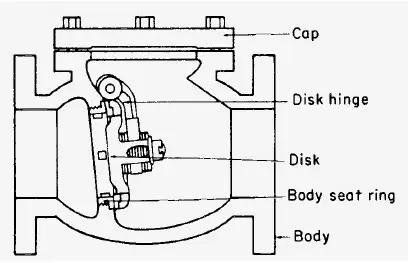
In swing check valves, when the disc moves to the fully open or fully closed position, it is unguided. Many different disc and seat designs can meet the requirements of different applications. Compared with metal-to-metal seat, soft seat swing check valves provide better sealing. The combined valve seat composed of metal valve seat ring with elastic insert also provides better sealing. The seat angle, that is, the angle between the seat and the vertical plane, can be changed from 0 degrees to 45 degrees. The vertical seat has a 0 degree angle. The larger the valve seat angle, the smaller the disc travel and the faster the closure, thus minimizing the possibility of water hammer. Generally the seat angle is in the range of 5 to 7 degrees.
Tilting Disc Check Valve
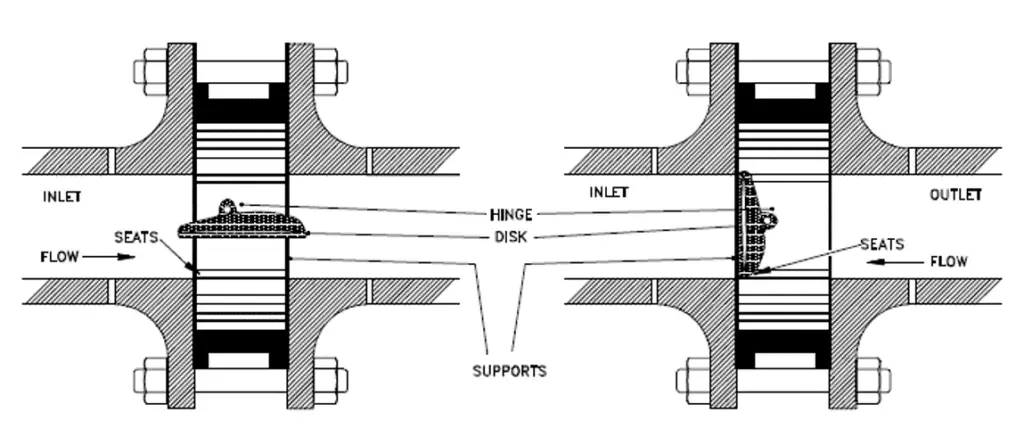
Tilting disc valve is designed to overcome some shortcomings of traditional swing type valves. The design of the inclined disc enables the valve to be fully opened and kept stable at a low flow rate, and to be quickly closed when the forward flow stops. The dome-shaped disk floats in fluid which flows at the bottom and top of the disk surface. Since the valve disc is spring-loaded, the spring force helps the valve to close quickly when the forward flow pressure decreases. In the picture above, you can see the flow rate of the valve. Tilting disc type valve are available in wafer type and lug type design.
Lift Check Valve
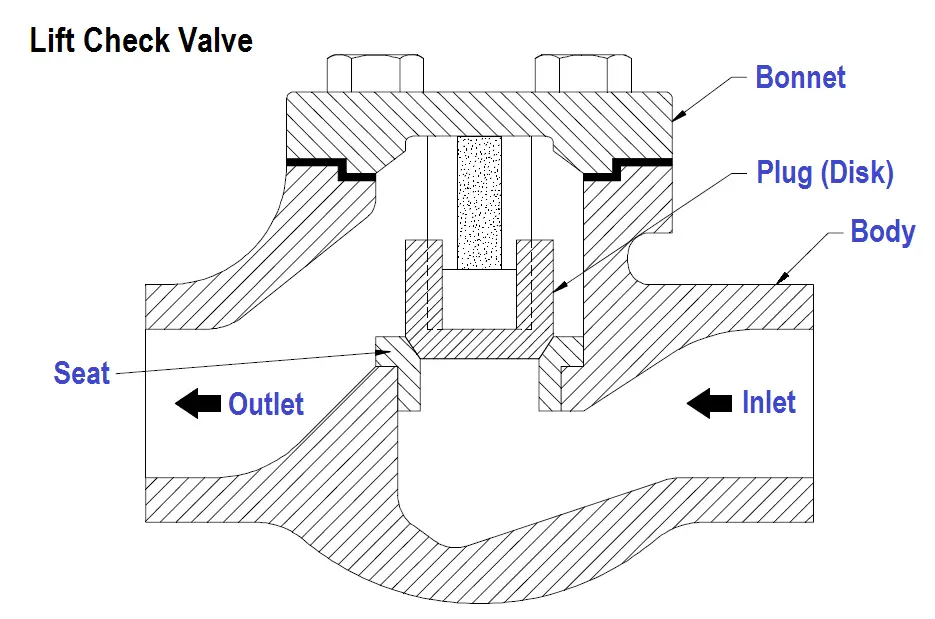
Lift check valves feature a guided disc and a similar seating arrangement as globe valves. They are best used in systems with globe valves and plastic check valves. There are three body patterns (horizontal, angle, and vertical) which can be installed in horizontal or vertical lines with upward flow. For proper function of lift check valves, the flow must enter below the seat. As the flow enters, the disk or ball is raised within guides from the seat by the pressure of the upward flow. The disk falls back down to close the pipe when the flow stops or reverses. When installed horizontally, the disk is suspended by a system of guide ribs.
Ball check valve
Ball check valves use a free-floating or spring-loaded ball placed in the seat ring as the closure element. It is similar in structure to a ball valve. The operation mechanism of the check valve is relatively simple. Most check valves contain a ball that is freely located above the valve seat which has only one through hole. The diameter of the ball is slightly larger than that of the through hole. When the pressure below the valve seat exceeds the pressure above the ball, liquid is allowed to flow through the valve; conversely, the ball will return to the valve seat, forming a seal against backflow. They are most suitable for viscous fluids or when there is sediment in the system, because the ball is kept clean when running smoothly.
Stop
Check Valve
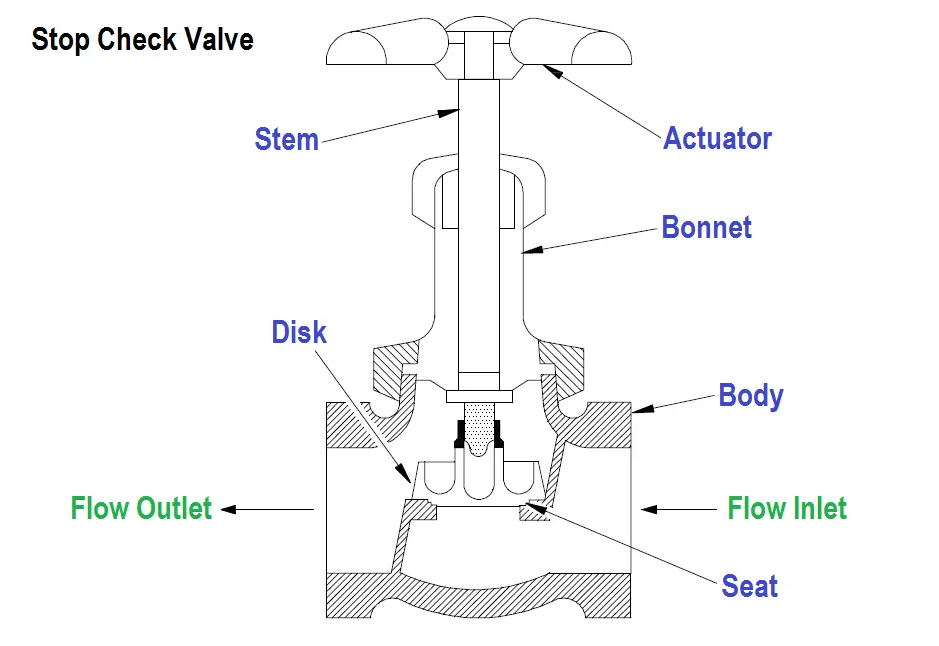
Stop check valves can be used as either one-way check valves or isolation (stop) valves like gate or globe valves. During normal operation of a system, these valves are used as conventional check valves; however, when needed, these valves can be closed with the aid of a tightening stem not fixed to the valve disc. After the valve stem is fully tightened, holds the free-floating disc against the valve seat, just as in a gate or a globe valve. These valves are available in tee-pattern, wye-pattern, angle-pattern, and inclined pattern.
Double-disc or wafer check valve
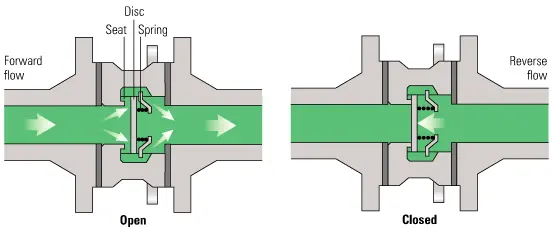
A double-disc or wafer check valve consists of two half-circle disks hinged together. The two disks fold together upon positive flow and retract to a full-circle to close against reverse flow. Wafer check valves were designed as a smaller, less expensive option for lift and swing check valves. Wafer check valves are designed to fit between a set of flanges. The disc in disc check valves moves in a plane at right angles to the flow of the fluid, resisted by the spring that is held in place by the retainer. As the upstream pressure increases and overcomes the force of the spring, and the weight of the disc, the disc lifts off its seat allowing flow through the valve. The spring allows the valve to be installed in any direction. These should not be confused with a double check valve, which is an assembly that contains two distinct check valves.
Application of Check Valve (NRV)
Check valves (Non-return valve) are used in a piping system to prevent backflow. The discharge line of rotary equipment such as pump and compressor always fitted with a check valve to prevent backflow.





